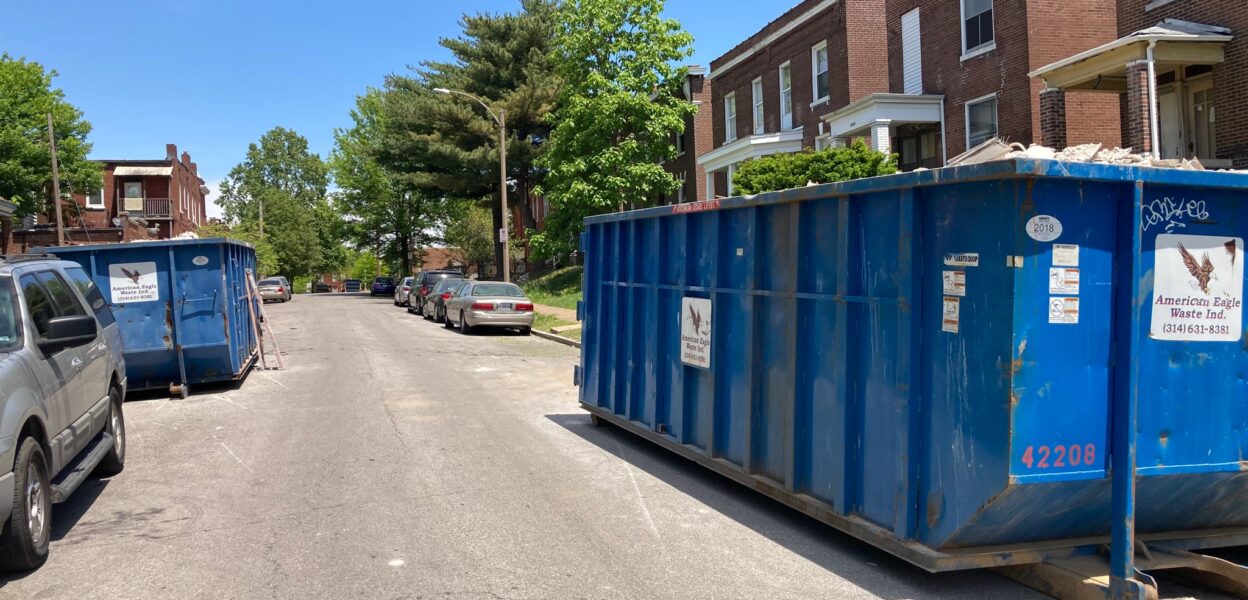Tower Grove South is ideally situated close to Tower Grove Park and has two thriving commercial districts for its residents to easily walk to. Amenities like these are why my wife and I decided to buy a home there in 2017, but they have also caused home prices in the neighborhood to skyrocket. This has fueled demand for the conversion of the neighborhood’s rental housing stock into high-dollar single family homes and townhomes. As a result, 2,000 fewer people lived in Tower Grove South in 2020 than in 2000. African-Americans have borne the brunt of this displacement, with a 40% reduction in population during that time. The pandemic has certainly not improved that trend. Tower Grove South is now whiter and more affluent than it has been in many decades, and I am a part of that. But it doesn’t have to be this way. Since 2022, more than 110 units of housing proposed for construction in the neighborhood have been blocked by cantankerous neighbors, boondoggle boards, and other relics of a development system that was designed to limit development. This system has hurt low-income families the most, and results in low-density patterns of development that are incompatible with our need to build a greener city. It also discourages further investment into the city, to the benefit of existing property owners like me.
One of the biggest stumbling blocks potential developers face is a badly outdated zoning code. St. Louis’ code was written in 1925, with the last significant updates made in 1950 and throughout the 1960s. During this time period, conventional wisdom throughout the US held that cities were too crowded. As a result, most of the building forms and densities constructed prior to WWII were made illegal to build under the zoning rules. These zoning policies along with other housing, financing, and transportation policies hollowed out urban cores everywhere, but heavily segregated cities like St. Louis were hit particularly hard. The need for reform is evidenced by the creation of the city’s Board of Adjustment, which grants variances to the zoning, but by failing to fix the code itself, it only creates further problems. To get a variance, the Board of Adjustment requires a developer to obtain the support of their alderperson, and of a neighborhood association, and this causes problems.
Tower Grove South has seen two projects derailed because of this. The most important of these projects is the renovation of Fanning Middle School. SLPS closed the school in 2021, and reached an agreement with a local developer to sell the school to turn into 62 apartments, with 30% set aside for individuals earning 50% of the Area Median Income. The developer needed the zoning for this project to be changed to allow residential development, as well as a variance for having less than 2500 square feet of parcel per unit and 55 off-street parking spaces for a 62 unit building. The variances were obtained with the support of the alderwoman and the Tower Grove South Neighborhood Association, but a resident filed a lawsuit (Case 2222-CC08892) to have the variances overturned. He thought that this project had too many units and not enough parking, and wanted the developer to reduce the project by a third or not build housing. A judge ruled that the Board of Adjustment had not provided enough evidence to prove that the property was no longer viable for use as a school, and overturned the variances.
Another project was proposed on Tholozan Avenue, by a developer who wanted to put 11 single-family homes on a vacant parcel he owned that was zoned for industrial use. A preliminary discussion was held with the neighborhood association, and while there was general support for the proposal, several residents scared the developer away from working to get the needed variance. Instead, the developer began the process of developing the parcel as an industrial site.
The Board of Adjustment is not the only legacy of our antiquated development process. As a result of some particularly stupid demolitions (such as Penn Station in New York City), a historical preservation movement began, resulting in the creation of the city’s Preservation Board to safeguard areas (which conspicuously do not include much of North St. Louis) of “historical character”. This suggests that in certain neighborhoods, our surviving old buildings of any size were precious jewels that had to be zealously guarded against new development. Here’s what that policy looks like in real life.
A developer purchased three properties on Morgan Ford. The developer wanted to replace them with 36 apartments. After conducting a neighborhood outreach effort and polling its members, the neighborhood association gave the developer a letter of support. The Preservation Board ignored this, and denied the developer preliminary approval. In the eyes of the Preservation Board, a small single-family house, a storefront that has gone through two tenants in six years, and a long-term problem property in the neighborhood are providing “historical character,” and so a developer is not allowed to move forward with a plan to add 36 more units of housing to the neighborhood without any tax abatement. I fail to see how picking old bricks over new residents helps the “vibrant commercial district” the abandoned house was “contributing to”.
Demand for housing led to over a hundred units of housing being proposed within a year and a half, but the city’s development processes have led to them being denied. This has not abated the demand for new housing in TGS, and as we have seen in cities all across the country, that demand will be satisfied. We will continue to lose the affordable properties we have left to rehabbers looking to make a buck, just as happens everywhere else. If St. Louis wants to avoid the well-worn path to gentrification that places like San Francisco blazed before us, we have to do what they couldn’t, and allow for more development to occur in our most desirable neighborhoods. To do otherwise is to repeat an avoidable mistake.

